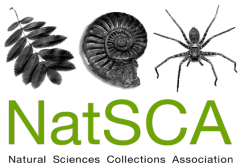This paper examines the impact of frozen tissue and molecular collections on traditional natural history museum collections. This was carried out by an examination of current literature, by talking to people who work with frozen tissue and molecular collections and by input of my own views as a curator of Lepidoptera (butterflies and moths) at The Natural History Museum, London. The first part deals with definitions of natural history museum collections and what they are used for. Then there is an examination of the issues surrounding the storage facilities for tissues and molecules, deposition of molecular material and the suitability of current and future museum specimens for molecular work. A large part of the future of systematics and taxonomy lie with molecular studies. As one of the main purposes of natural history museums is the study of systematics and taxonomy then natural history museums have to embrace frozen tissue and molecular
collections to survive. I conclude that molecular collections are an important part of the future of natural history collections.
Journal Article
-
The Impact of Frozen Tissue And Molecular Collections on Natural History Museum CollectionsNatSCA News, Issue 10, pages 31 - 47Keywords:
